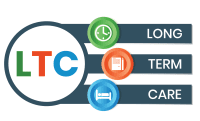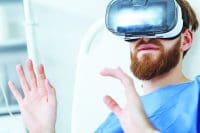Software, front-line decision making, and culture change combine in a win for patients and staff.
An interview with Jessica Rivas, MSN, RN, CENP, NEA-BC, FACHE, vice president of operations at Memorial Hermann Cypress Hospital in Houston, Texas, and Emily Handwerk, vice president of information systems at Memorial Hermann Health System.
Coordinating appropriate nurse staffing across a large organization like Memorial Hermann Health System in Texas is a big job. The system includes 19 hospitals, and by 2016, staffing challenges were on the rise, with increases in overtime use and dependency on agency nurses. In addition, nurses were shifting from full-time and part-time positions to as-needed (prn) positions to take advantage of higher wages and fewer commitments.
“We dug deep into our system to find out why this was happening,” Rivas says. One of the biggest issues leaders found was that no standard scheduling practices existed across the system. And there was no transparency from the frontline level to middle and top leadership. “We were trying to fix scheduling problems after the fact and not being proactive in having transparency and more data to make better staffing decisions,” Rivas says.
Rivas and Handwerk began working with human resources and other system chief nursing officers to find a systemwide solution. They decided on a software upgrade and incorporated GE Healthcare’s API workforce management technology with the development of a new staffing model. The new program, called My Time and Schedule, includes self-scheduling, open-shift notification, and access to the system via mobile devices.
The new technology went live in May 2018 and was implemented across all hospitals in the Memorial Hermann Health System. It also was launched at TIRR Memorial Hermann Research Center and Memorial Hermann Prevention and Recovery Center in Houston.
Putting a stop to hospital jumping
Major issues addressed in the new staffing model included pay and commitment requirements for prn nurses. Under the old model, these nurses were paid a higher hourly rate to work more shifts, and they didn’t have a weekend or holiday commitment. This was encouraging full- and part-time nurses to go prn.
“We turned that upside down,” Rivas says. “This wasn’t just about upgrading and implementing software. We changed how we staffed and established guardrails around commitment through the system.”
The new staffing model included a minimum work commitment and pay practice for prn nurses so they could no longer leverage different hospitals. Regional and local float pools also were established, and the software tracks if prn staff are meeting their minimum hour requirements.
“Everyone now is held to the same commitment and contract,” Rivas says. “This also has stopped nurses from jumping from hospital to hospital.”
Show me the data—and the skill set
The My Time and Schedule software collects data that can easily be leveraged by schedulers. Under the past system, managers didn’t have the data to see if nurses were meeting their minimum commitment. With the new system, managers can pull this information and hold each other accountable for scheduling and ensuring nurses are up-to-date on their obligations.
Another improvement is the software’s ability to group nurses into skill sets. The system warns schedulers if a nurse doesn’t meet the minimum requirements to work in a specific department. For example, it won’t allow a scheduler to place a postpartum nurse into an ICU. This can be overridden, but charge nurses and managers can’t do it without approval from a senior leader. “This has created a higher level of safety,” Rivas says.
Schedulers can see all openings and all qualified staff on the same screen. One nurse can be compared to another easily, including number of hours worked, hours of overtime, and when they’ve been called, floated, or cancelled.
“If you’re concerned about overtime, you can make your choices based on the analysis of their hours,” Rivas says. “The transparency is amazing and beneficial.”
Organized, consistent, and equitable
One of the boons of My Time and Schedule is that it creates an organized, consistent, and equitable self-scheduling process for nurses. The first week of the scheduling cycle, full-time and part-time nurses access the system and schedule themselves. After they’re done, the prn staff pick their schedules. For nurses with set schedules or for those who prefer them, the software allows the scheduler to build a framework for them and to repeat it consistently.
The new staffing model requires that schedules are finalized and published at least 2 weeks in advance, which has improved scheduling consistency and the ability of nurses to plan their lives. “Nurses love that they can set and see their schedule and time sheet on their cell phones,” Rivas says. “It’s been transformational.”
Customizing the system
The most difficult aspect of launching the project included assigning competencies and requirements for every nursing position and programing the system to capture the nurses’ skill sets. After this was completed, all staff nurses had to log in and document their competencies.
An ongoing challenge is ensuring nurses update their information as they renew or add certifications and other skill sets. If they don’t properly enter or update their skill sets or define their credentials, it may appear in the system that no one is qualified for a posted position. On the other hand, if the qualifications of a posted position aren’t entered correctly, it may appear that everyone is qualified. “Attention to that kind of detail is critical to success,” Handwerk says.
Fine-tuning the system is an ongoing process. For example, the skill sets and competencies in women’s services are still being tweaked to better define the differing credentials needed in antepartum, postpartum, and labor and delivery. “It takes a lot of work to customize the system to meet the needs of a large health system,” Rivas says. “But at the end of the day, it’s a winner for our patients and our staff.”
Culture change
Another challenge in launching the My Time and Schedule system was not with the technology but with changing the culture, according to Rivas. For example, many managers were accustomed to scheduling using paper calendars. The daily task of adding and eliminating people from the system was new for them, and it took time for them to adjust. “It hasn’t been an easy project or a perfect project, but overall the successes have outweighed the challenges,” Handwerk says.
Successes include decreasing the time nurse leaders spend calling and texting to find staff. Now, with the click of one button, staffing needs are instantly broadcast to all qualified staff via text and email. In addition, overtime and agency use has decreased.
Overall, the health system has achieved a significant cost savings. It’s difficult to quantify and attribute it all to the My Time and Schedule, but the software has been a significant part of the approach, according to Rivas. “The initial goal was to save $10 million, and we achieved that,” she says.
My Time and Schedule also has helped the health system achieve its goal of supporting nurses to become leaders in their own workplace. “Handing staffing over to front-line nurses with guardrails and guidelines in place was the best thing we could have done,” Rivas says. “This tool allowed us to let go and help nurses make front-line decisions.”
Catherine Spader, RN, is a freelance medical and healthcare writer in Littleton, CO.


















